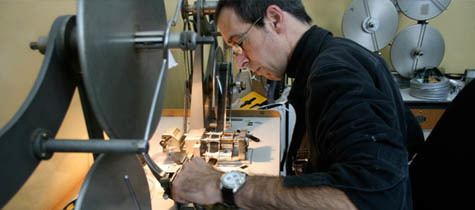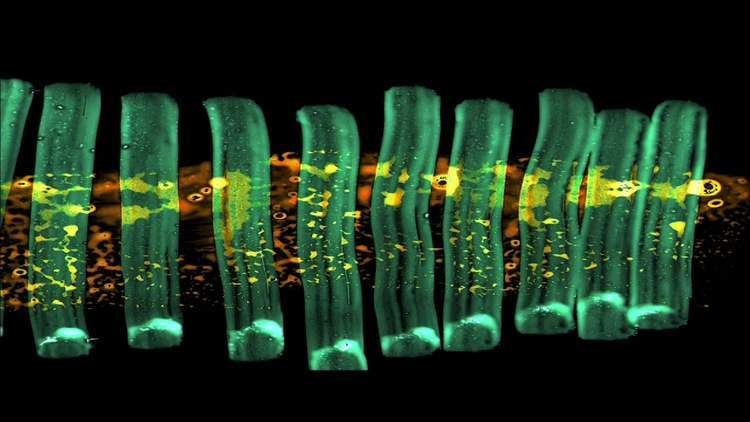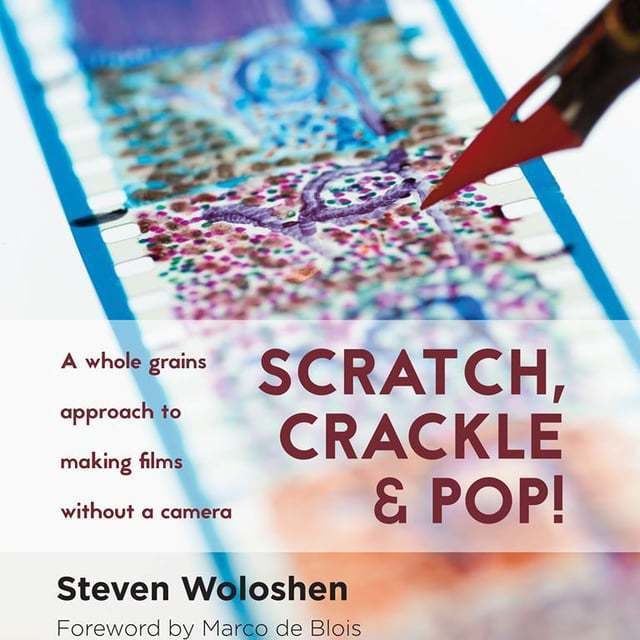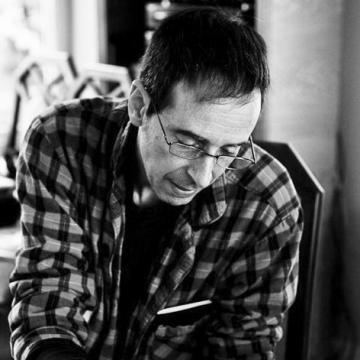Name Steven Woloshen | Role Animator | |
 | ||
Movies 1000 Plateaus (2004-2014), Crossing Victoria, Fiesta Brava, Cameras Take Five, Rebuttal, Snip, Playtime Books Recipes for Reconstruction: The Cookbook for the Frugal Filmmaker Education Concordia University, Vanier College | ||
Lightbox steven woloshen drawn on film animation artist
Steven Woloshen (born 1960) is a Canadian film animator and a pioneer of drawn-on-film animation.
Contents
- Lightbox steven woloshen drawn on film animation artist
- Interview with steven woloshen at animator festival in poznan
- Writing
- Filmography
- References
Born in Montreal, Quebec, Woloshen first attended Vanier College, where he worked with Super-8 film and video, then specialized in 16 mm independent film techniques at Concordia University in Montreal. He has since created animated and experimental films, which have been shown at screenings and festivals around the world.

Working in camera-less animation since 1982, Woloshen has used scratches and lacerations on film to create emotional content.

Woloshen is a Montreal-based camera less animator who has been making films since the late ‘70’s. He studied film at Concordia University, where he initially made documentaries and collage films, but the freedom and accessibility of scratch animation won him over. Since 1999 he has worked exclusively in 35mm CinemaScope, an oddity in the independent film world that is made possible by his otherwise thrifty means of production. His works have screened worldwide at festivals including the Montreal World Film Festival, Tampere International Short Film Festival, Annecy International Animated Film Festival, Ottawa International Animation Festival, and I Castelli Animati in Rome.

Woloshen is heavily inspired by music, particularly jazz, and has made numerous short abstract works in which the images are created in synchronization to a music track. While most of his films are exuberantly colored, Me Me Ma Ma (2000) is done in spare black and white. White scratches resembling rubbings, chalk drawings or electronic static jitter across a black background, matched to the driving beat of a techno music piece. Bru Ha Ha! (2002) takes a piece by Erik Satie and translates it into abstract imagery. The deep, masculine sound of a tuba appears in blocky shapes of colour, contrasted with delicate white squiggles corresponding to a woman singing. The tuba and voice play off each other as if in conversation, male and female. Dave Brubeck’s jazz classic “Take Five” is the inspiration for Cameras Take Five (2002), in which fluid lines represent the saxophone voice, moving over top of color fields of electric blue and green interspersed with playful shapes and doodles. These are vibrant, light-hearted works, which capture the spirit and energy of the music.

As in jazz, improvisation and chance are important aspects of Woloshen’s work. Because his films are self-funded and the tools of his craft (film leader, markers, inks, brushes and craft knives) are readily available, he can seize on an inspiration and act on it immediately. He writes: “I think spontaneous urges and desires are the best part of handmade film making.” Woloshen even constructed a portable scratch box so that he could do scratch animation during breaks on his job as a driver in the feature film industry.

As fun as Woloshen’s musical salutes are, for me the strongest and most satisfying of his films are those which depart somewhat from this method, such as The Babble on Palms (2001) and Two Eastern Hair Lines (2004). The Babble on Palms features various found-footage scenes of everyday life, accompanied by music by Ali Akbar Khan. The outline of a hand appears over all of the scenes, partially blocking our view. The hand is treated with constantly changing decoration such as dots and spirals, and patterns and colours reminiscent of both the solar system and cells under a microscope – the universe is contained in our hand. The film suggests a thread connecting all people, but also the limitations of our viewpoint and the individuality (the “hand print”) that sets us apart.

Two Eastern Hair Lines also employs found footage, and is composed primarily of scenes of two or three people – a man and woman in a room together, two men seated across a desk from one another, a couple seated side-by-side. Parts of the images are framed, blocked out, or painted over, dividing and isolating the figures from each other. Set against a 1939 Chinese recording, “Parting at Yang Kwan,” Two Eastern Hair Lines is full of longing. It reflects on the unbridgeable distance between people and the difficulties of communication. As Woloshen writes in his description, “Sometimes the rifts between us are as wide as rivers, and sometimes as small as hair lines.”

Woloshen was recently the subject of a retrospective screening at Saw Video Gallery, hosted by the Canadian Film Institute He is also featured in a new anthology on animation, The Sharpest Point: Animation at the End of Cinema, edited by Chris Gehman and Steve Reinke and co-published by YYZ Books, the Ottawa International Animation Festival and the Images Film and Video Festival.
Since his return to filmmaking in 1996, after a hiatus of more than a decade spent working in various capacities in the film industry, Steven Woloshen has been extraordinarily productive, seemingly increasing his output year by year even as he faces the usual obstacles that tend to slow an independent filmmaker’s career (parenthood, the need to earn a living, lack of financing). It’s clear that the years he spent working on film sets and in labs were far from wasted: Woloshen’s work “post-hiatus” is extraordinarily assured compared to his promising films from the 80s, showing enormous progress in aesthetics, graphic technique and understanding of lab processes. (Most of his work now is in 35mm, and often in CinemaScope, an unusual format for this kind of animation.) Since 1999’s Get Happy, it seems, Woloshen has found his rhythm and his method. And happily, following the huge festival success of Ditty Dot Comma (2001) and a subsequent retrospective at the 2002 Ottawa International Animation Festival, his work has been increasingly seen and recognized at festivals, cinematheques and other venues around the world.
His film, Cameras Take Five, was included in the Animation Show of Shows.
Interview with steven woloshen at animator festival in poznan
Writing
2010 "Recipes for Reconstruction" Scratchatopia Books. Montreal ISBN 978-0-9866231-1-0
2015 "Scratch, Crackle & Pop" Scratchatopia Books. Montreal ISBN 978-0-9866231-2-7
